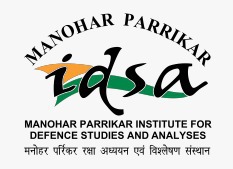Is Pakistan a Good Choice for Renewal of GSP+ Status?
Given the violations of international conventions linked with the European Union’s GSP scheme, Pakistan’s GSP+ status must not be renewed.
- Ashish Shukla
- June 07, 2023
Given the violations of international conventions linked with the European Union’s GSP scheme, Pakistan’s GSP+ status must not be renewed.
Pakistan’s political culture has become not conducive for democratic politics, at a time when the country is faced with the possibility of economic default and increasing attacks of insurgent groups from within.
Border clashes and failure to act against the Tehreek-e-Taliban Pakistan (TTP) have led to rising tensions between Afghanistan and Pakistan.
Given the ideological convergence the Tehrik-i-Taliban Pakistan (TTP) has with the Taliban, the latter may not be able or willing to fulfil Pakistan’s demand that its activities be curbed.
Outlining Pakistan’s vision and global engagement in the context of strategic and security trends, the recently released National Security Policy of Pakistan also acknowledges a serious need for a robust water management mechanism and an inclusive climate change policy.
Pakistan’s NSP, the first such policy document with guidelines for achieving the set national security goals, is a hint towards breaking the inertia and embracing change to forge a more prosperous Pakistan. However, the question is whether it is possible, if Pakistan continues to remain entangled with the past.
Territorial disputes between India and Pakistan got a new dimension with the release of a new political map by the latter on 4 August 2020, apparently in response to India’s move to administratively reorganize the state of Jammu and Kashmir. Widely described as ‘cartographic aggression’ against India, the new map lays claim over many parts of India. The article traces the historicity of map-making as a nation-building project for Pakistan and seeks to decipher the strategic objectives behind this move.
As the civilian political space shrinks and the capacity of the state gets hobbled by political dissension and internal resistance from forces armed with an alternate blueprint for action, Pakistan is likely to rely more on its anti-India stance to build national unity, seeking especially to suck in the militant religious groups into its orbit.
The year 1971’s geostrategic significance for the Indian subcontinent rivals that of 1947 when British India was divided into India and Pakistan. While the roots of Bangladesh's secession from Pakistan lay firmly within the Pakistani polity, India's political support for the Bangladesh freedom movement and its military intervention were crucial for the liberation of Bangladesh. The Indian campaign for the liberation of Bangladesh was brilliantly conceived and deftly executed.
As the bulk of India’s foreign trade transits through sea, it turns sea lines of communication through the Indian Ocean strategically important for India. The newly independent India did not pay adequate attention to this factor. Consequently, within two decades of independence continuous flow of unprotected large volume of India’s sea trade had become a strategic target for its adversaries. In this context, during the 1971 India–Pakistan war, India efficiently protected its vital sea lanes, ensuring that goods and commodities continued to reach Indian ports.



